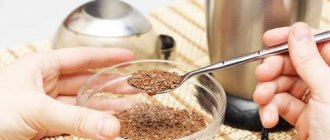The significant recognition of copper cookware by culinary specialists is due not only to its unsurpassed appearance, but also to the specific properties of the metal. Many professional chefs value copper cookware for the uniformity of heating and the speed of cooking in it.
Copper's high heat conductivity makes it an indispensable tool for delicate cooking. This useful property allows you to cook the dish over minimal heat.
In high-budget restaurants, it is customary to use copper cookware. In addition to the qualities described above, copper cookware has significant heat capacity and antibacterial properties.
However, despite the benefits of copper cookware, there is an opinion that it is very harmful and affects the quality of cooked food. How justified is this statement, and are copper cookware actually harmful? The issue requires thorough consideration.
Useful and harmful properties
Over the course of a long time, copper utensils have not lost their relevance. This is explained by the physical characteristics of the metal, which contribute to faster, higher-quality cooking. To decide on such an expensive purchase, you should carefully study the benefits and harms of copper utensils. There is an opinion that kitchen utensils made of copper and its alloys can negatively affect the human body. Whether this is true or not, let's find out.
Beneficial features
Useful characteristics prevail, otherwise the very existence of dishes made of this metal would be meaningless:
- High thermal conductivity. This property of copper is especially valued by chefs. Such dishes heat up quickly and evenly and retain heat for a long time, which is especially important for preparing delicate seafood dishes, as well as various desserts and sauces. Food is cooked many times faster, which allows you to retain more nutrients in the food.
- Improved taste. Saturated with microparticles of copper, products cooked in such dishes acquire a special taste that cannot be replicated in pots and pans made of any other metal.
- Antibacterial action. This feature of the metal was actively exploited in ancient times. It was noticed that food left in copper dishes lasts longer and does not spoil. Water vessels had a disinfecting effect - in them, water did not lose its taste for a long time and did not go rotten. Later, the bactericidal properties of the metal were confirmed by scientific research: copper molecules kill many pathogenic bacteria that can aggressively affect the digestive system. However, at high temperatures, such dishes lose their antibacterial properties. Recently, people have begun to drink water from a copper mug; it is believed that this way one can compensate for the lack of this metal in the body.
- A light weight. This mainly applies to cookware made from copper-containing alloys, such as brass. Kitchen utensils made of pure copper are much heavier.
- Durability. With proper care, cookware can last for a long time. It is often passed down from generation to generation.
- Beautiful design. Both ancient copper specimens and newfangled examples of modern dishes have an aesthetic appearance.
As you can see, copper utensils have many advantages when used in the kitchen compared to products made from other materials. Having figured out why copper utensils are useful and valuable, professionals recommend learning about their harmful properties.
Metal damage
For a long time, people fearlessly used such utensils. But technologies that emerged in the 20th century made it possible to more thoroughly study the possible harm of copper utensils to the human body. The studies also revealed several properties that have a destructive effect on individual products if they are stored or cooked in copper utensils.
Dangers of using kitchen utensils made of this metal:
- copper has an aggressive effect on the acids found in some foods, such as fruits and berries. With their prolonged contact, oxidation of the metal occurs, which is harmful to human health, as it is fraught with poisoning;
- It is unacceptable to store cooked food in copper dishes for a long time; the beneficial properties of the products are lost. Oxides of polyunsaturated fatty acids lead to exposure to microdoses of radiation. Constant consumption of food stored in such containers increases the risk of cancer;
- When left in a humid environment for a long time, a patina forms on copper utensils - a very dangerous green coating. Cooking in pans coated on the inside with a similar substance is strictly prohibited - there is a high probability of poisoning, the consequences of which will negatively affect your overall health;
- copper tends to accumulate in the body. It has a negative effect on the functioning of the liver, so it is not recommended to constantly eat food from copper plates for young children, people with alcohol addiction, or those with chronic liver diseases;
- the high cost of copper utensils, which not everyone can afford.
When analyzing the benefits and harms of copper utensils, it is worth mentioning that brass utensils have the same properties. However, if brass utensils are used incorrectly, the harm to human health is many times higher. This is explained by the fact that the alloy composition, in addition to copper, includes zinc, aluminum, iron, manganese, and sometimes lead. During the oxidation process, harmful substances released by these metals can enter products and, therefore, have an increased harmful effect on the body. The answer to the question whether utensils made of copper and brass are harmful or not will be negative, provided they are used correctly and are not damaged by oxides!
Negative qualities
In addition to the positive properties, copper metal utensils have several disadvantages. Scientists have identified several negative qualities that can harm health.
- The presence of acids in vegetables and fruits. Under the influence of copper, the beneficial vitamin is destroyed.
- You cannot store fruit, vegetable and berry products in metal containers, as fatty acids will oxidize, which can cause cancer.
- The greatest harm is possible when storing dishes in an environment with high humidity. It will cause a green coating to appear on the surface, which indicates oxidation.
- Plaque occurs when food acids are heated; in addition, when exposed to heat, acids produce substances that are very harmful to humans. If plaque appears on the walls of the dishes, remove it by wiping it with salt soaked in vinegar.
- The high price and special care make daily use of copper-based cookware inconvenient. On store shelves, metal utensils shine, and when people buy a saucepan, they discover a protective film on the outside that must be washed off before the first cooking. After that, it will have to be cleaned every time after its use.
Containers made of this material are contraindicated for preparing food intended for small children or people with alcohol addiction. In infants, this substance can cause liver disease. When drinking alcohol, this chemical element enters the body and is absorbed in large quantities, which can lead to cirrhosis of the liver.
Varieties
Copper is a fairly expensive soft metal, which in its properties and appearance is comparable to its noble counterparts. Copper utensils are an expensive purchase. Metallurgy has learned to create cheaper and more practical alloys that retain the best qualities of the material, which form high strength. Currently, there are several types of copper alloys used to make tableware.
They are divided into bronze (copper + tin) and three types of brass:
- regular brass (copper+zinc);
- cupronickel (copper+nickel);
- nickel silver (copper+zinc+nickel).
Each of these metals has special properties that are optimal for the production of certain types of kitchen utensils.
Copper cookware has a wide range:
- Pots - there are many variations in volume and height of the sides; they are used for boiling water, steaming food, evaporating broths and sauces. The process occurs uniformly at a temperature of 95-100 °C.
- Frying pans are models with high sides, equipped with handles on the sides or one long holder. They vary in diameter and volume. Suitable for preparing fish, meat, vegetable dishes, scrambled eggs, pancakes.
- A stewpan is a kind of hybrid of a saucepan and a frying pan. Used for stewing, simmering, frying dishes. Cookware with uniform heating of the walls and bottom. You can cook fish, meat, and vegetables in this device.
- Kettle – kettles are distinguished by height and size. The water boils in them in a matter of minutes.
- Turk is a vessel for brewing coffee. The characteristics of copper allow you to prepare a tasty and aromatic drink.
- A coffee pot is a copper product for serving an already brewed, ready-made drink to the table.
- Samovar – traditionally used for boiling water or brewing tea. It varies in appearance and tank volume (from 1 liter and more).
- Basin - ideal for making preserves and jams. Cooking proceeds evenly. In such a container, cooking time is reduced.
- Gravy boats – used for preparing sauces, can be used as tableware.
- Cataplan - compatibility of a frying pan with a saucepan, the principle of operation is like a pressure cooker. Used for preparing some dishes.
- Paella is a wide frying pan with low sides. Essential for preparing Spanish dishes with amazing taste.
- Pots – in appearance they resemble camping pots. You can cook various soups, stews, porridges, and pilaf in them.
- A fish cooker is a utensil designed for cooking various types of fish and seafood. Equipped with a grate for steaming.
- A roasting pan is a rectangular product with low, thick walls. Used for preparing roasts, all kinds of casseroles, and dough dishes.
- Ladles - There are many varieties for specific purposes, such as melting butter, chocolate, creating a water bath, beating eggs.
- A sugar bowl is a special container for storing and serving sugar on the table, usually comes complete with a lid. Pairs perfectly with other copper serving pieces.
- A candy bowl is a special vase for serving or storing candy. It can take the form of a deep bowl or a plate on a leg. Varies in height and size.
- A bucket for cooling champagne is a special copper utensil, which is a table setting item, designed to cool champagne in ice. They vary in wall height, volume, diameter and number of bottles that can fit inside.
- Cutlery – used for table setting on special occasions. There are many modifications, decorated with beautiful patterns.
- Plates - there are a large number of types. More often they are intended for personal use, as well as for serving a common table.
- Salad bowls are special copper bowls for serving salads and other cold appetizers on a common table. They vary in shape and size. Can be used for dishes that do not contain acidic foods.
- Trays – have different shapes (round, rectangular, square) and sizes. Serve for serving dishes. Used for the tea ceremony.
- Mugs – there are many options for this copper utensil. Can be used for infusion of water, as well as daily drinks. An excellent option for travel or hiking, as it is light weight and highly durable.
- Jugs – are made in various shapes and sizes. Suitable for storing or infusing water.
Brass is often used to produce samovars, teapots or coffee pots. Tableware and cutlery are often made from cupronickel and nickel silver. Despite the presence of copper in them, the finished product resembles silver.
Tray
Kovshik
Pan
Pot
Saucepan
Kettle Coffee pot
Pelvis
Gravy boat
Paella
Kazan
brazier
Candy bowl
Bucket for champagne bottles
Plate
Mug
Jug
Samovar
Turk
Sugar bowl
Cataplane
Cutlery
Copper in the kitchen
Items made from this material are attractive with their appearance: they will look elegant in any kitchen and create a beautiful “highlight” of the decor. The following items are made from copper raw materials:
- frying pans;
- pots of any size;
- coffee pots, teapots, Turks;
- fondue makers.
Manufacturers sometimes combine copper and other materials to make handles or lids, which can extend the life of the product.
Frying pan with lid Ruffoni | 30 cm | 32943 ₽
Casserole with lid Ruffoni | 26 cm | 5 l | 46452 ₽
Professional chefs use metal utensils all the time. Its value lies in reducing the cooking time. Copper is characterized by high heat conductivity, which allows the products to be used to create even particularly complex culinary delights.
Inner coating
In order to extend the life of copper cookware and reduce direct contact with metal, it is coated on the inside with a protective layer of tin or stainless steel alloys.
Tin is most often used to coat the insides of pots or teapots. However, if the temperature exceeds 100 degrees during cooking, there is a risk that the coating will begin to collapse. The stainless steel interior is suitable for frying pans, but can also be used on other cookware.
A steel protective layer is more reliable and practical, but it cannot be restored, which cannot be said about cookware with tin protection.
Steel
Tin
How to choose copper cookware?
The quality of prepared food and comfort during cooking largely depend on the correctly selected cookware. If you approach the issue carefully, there will be no problems with operation, and the dishes will turn out tasty and properly prepared.
- Pay attention to the bottom. When purchasing a frying pan or Turk solely for interior decoration, this point is not important, but for good and uniform heating, the thickness of the bottom should be within 2-2.5 mm.
- Another important point regarding how to choose cookware has to do with handles. Due to high thermal conductivity, the saucepan heats up in all parts, so there is a risk of getting burned. It is advisable that the handles be made of stainless steel, brass or bronze.
- When copper cookware, tinned or not, is hammered or forged, it is incredibly durable. However, this only applies to high-quality products. When choosing a pot or frying pan, pay attention to the weight. If it is approximately equal to the weight of the same stainless steel or aluminum cookware, it is probably a fake. The copper layer is applied only on top.
Cookware without inner coating
Copper cookware is not always equipped with a protective inner layer. Some dishes turn out perfect only as a result of direct contact with metal during the cooking process. Uncoated dishes are used for preparing sauces, some desserts, cold dishes, beating eggs, infusing water, and also boiling it. These include pots, teapots, gravy boats, and jugs. In addition, dishes made of pure copper can be used as table setting items: trays, salad bowls, sugar bowls, candy bowls, stands for wine and champagne, plates and individual cutlery.
The main condition for using copper utensils without a protective coating is a ban on preparing dishes containing all kinds of acids. These same foods cannot simply be placed on plates to avoid oxidation. Such products include tomatoes, berries, sour fruits and vegetables, pickled and fermented foods, sauces and salads with vinegar, and lemons.
What should you pay attention to?
So, you have decided to buy copper utensils, but you are still in doubt: how not to make a mistake? We recommend choosing trusted manufacturers who guarantee the quality and safe composition of their products. The cost of such utensils is unlikely to be low, but it will serve for decades.
In addition, do not forget that modern manufacturers use various combinations of materials for maximum safety and comfort. Thus, the inner surface is coated with tinned tin (to avoid oxidation), and handles and lids can be made of materials with low thermal conductivity to avoid getting burned. It is noticeably easier to care for such utensils, and it is more pleasant and safer to use. Over time, a patina also forms on the copper surface, which enhances the protective effect.
For any housewife, good dishes are a source of special pride, because she uses them to prepare a dish for the whole family every day and create another culinary masterpiece. There is no shame in putting this on open shelves as decoration. Therefore, many have a very reverent attitude towards these household items and a careful approach to their selection. When quality is put in first place, even before purchasing, the question is studied in detail from what metal certain interior and everyday items are made and whether such utensils are harmful. There is an opinion that, for example, copper utensils are harmful to health and have little benefit. In this article we will try to understand such an important issue for the whole family.
What is allowed and prohibited to do with it
Provided that copper cookware is coated with a protective layer, it can be used to cook almost any dish. However, for the most part, it is designed for cooking over low heat, without sudden temperature changes, by stewing, evaporating or simmering. Also suitable for quick cooking, which helps preserve the taste and nutritional properties of food.
Kitchen utensils made of pure copper, without an internal layer of protection, are mainly suitable for preparing cold dishes without acidic ingredients. Such utensils are ideal for kneading and baking baked goods, making desserts with sugar, egg yolks, caramel and chocolate. It is possible to boil water, cook broths, brew coffee, tea, stew meat and fish dishes, cook porridge and pilaf. Food with acidic contents will damage the dishes.
It is better not to use uncoated cookware for cooking on the stove.
Cookware with an inner coating can be used for preparing any food
Copper utensils in the kitchen interior
The characteristic shade and shine of copper will not fit into any environment. However, sometimes copper utensils can transform or radically change the interior.
- Modern design in white colors, copper shine will highlight and fill it with dynamics. Laconic modern products are good here.
- Country style or eclecticism will be well complemented by antique copper dishes.
- If your kitchen design includes an island or ceiling beams, this is a great place for copper pans and ladles.
Care methods
Copper cookware retains its attractive appearance only until the first cooking in it. In order for the use of products to continue to be a pleasure over time, it is necessary to handle them competently. With proper care, copper kitchen utensils can last for many years.
Basic operating rules and tips on how to care for copper cookware:
- use the products carefully and carefully, avoid falls, since copper is a soft metal;
- Avoid using metal spatulas when cooking to avoid cracks and scratches;
- wash dishes only by hand; do not place them in dishwashers, as strong cleaning agents can damage the color of copper utensils;
- For cleaning, it is recommended to use only soapy water and do not use all-purpose chemicals with chlorine;
- water temperature for washing is 40-50 °C, too hot can damage the structure of the dishes;
- To give the dishes a sparkling shine, it is prohibited to use cleaning products with an abrasive composition, hard brushes and graters. A special paste for copper is more suitable; you can use a mixture of flour, salt and water for this purpose;
- After washing, you should thoroughly wipe the products dry;
- clean utensils should be stored in a closet, hanging or upside down on a rack;
- should be stored in a dry environment and avoid exposure to steam to prevent oxidation of copper and the formation of a patina dangerous to the body;
- dishes without liquid, completely empty, must not be left on an open fire on the stove;
- In order not to damage the protective inner layer, dry utensils should be rinsed and only then pour boiling water;
- You can add salt to water or broth only after the liquid has boiled;
- To prevent and protect against oxidation during storage, you need to coat the dishes with antioxidant compounds; the product must be washed off before cooking.
By following these simple rules, you can extend the service life of pots and pans made of copper and its alloys for many years. To ensure that copper kitchen utensils do not lose their noble appearance, they must be regularly cleaned to a shine. This is the only way to protect the item from the appearance of blue-green patina and unpleasant stains. For such purposes, there are ready-made pastes or polishes. However, you can achieve a mirror shine using improvised means that are present in the arsenal of any housewife.
Before you start cleaning copper cookware at home, you should carefully study what ingredients you may need and what the sequence of work is. All actions must be carried out in compliance with safety regulations, and you must wear protective gloves on your hands.
Regular tomatoes will help restore copper utensils to their former shine. The process will take two to three minutes:
- Apply a small amount of ketchup or tomato paste to the stain.
- Leave on the dish for 1-2 minutes.
- Wash off with warm soapy water.
In this way, you can remove old dirt and remove dark spots. Often, after improper use, copper utensils begin to lose their novelty and attractiveness, to avoid this you need to do the following:
- Mix salt and vinegar in equal proportions.
- Apply the mixture to problem areas.
- Leave to act for 1-2 minutes.
- Rinse with warm water and wipe dry.
- Polish until shiny with a piece of genuine leather.
The method is excellent for removing contaminants in grooves and joints on copper cookware. You can use lemon and salt to clean copper cookware. Despite the fact that you cannot cook sour things in copper containers, this method of care has an incredible effect:
- Take a lemon and cut it in half.
- Dip the citrus in salt.
- Rub the surface to be treated.
- Leave for a few minutes.
- Wipe with a damp cloth or rinse with warm water.
This method of cleaning large surfaces is suitable if the dishes do not fit into the washing container. A vinegar and water solution will help remove stubborn stains, blackness and fingerprints after repeated use.
Ingredients:
- vinegar – 100 ml;
- salt – 1 tbsp;
- water – 600 ml.
Procedure:
- Mix the ingredients.
- Take a piece of fabric that does not leave fibers.
- Moisten the cloth in the resulting mixture and rub the surface to be treated. If the utensil is small, you can completely place it in the solution.
- Leave for 20-30 minutes; if fully immersed, reduce exposure time to 10 minutes.
- Rinse under warm running water.
These simple methods will help keep copper cookware in perfect condition for quite a long time. Remember that cleaning must be done regularly.
Copper utensils should only be washed in warm water.
Lubricate copper with special products
Wipe the surface of the cookware with a dry cloth as often as possible
Lemon, baking soda and vinegar are used to clean copper cookware
Benefit or harm?
Let’s say right away that copper cookware requires a special approach. It is recommended to cook, first of all, sweet dishes with a high sugar content in copper cookware - in this case it will not oxidize. It must be washed thoroughly and cannot be used for storing prepared foods. It is better to use wooden spoons and spatulas for mixing here, and wash dishes in soapy water, avoiding aggressive chemicals. Also, do not use abrasives or metal sponges.
But rumors about the dangers of copper in everyday life are greatly exaggerated. Suffice it to remember that for several centuries we have been using copper pipes from which water flows into our homes. Up to 100 g of copper is contained in the body of each person, and the optimal dose of copper that we should receive daily is up to 2 mg. It is almost impossible to exceed this concentration even with daily use of copper cookware. This trace element takes part in natural metabolism. Therefore, it does not accumulate, but is excreted from the body along with other waste products.
Moreover: it has been proven that copper, like silver, has an antiseptic effect. Even before the invention of antiseptics, it was used to disinfect and prevent infections - for example, during the plague epidemic. In 2008, the bactericidal properties of copper were officially recognized - based on the results of studies conducted by the American Environmental Protection Agency.
The conclusion is obvious: for humans, copper in everyday life is more necessary than harmful. Consequently, copper utensils, provided they are a high-quality product, are an extremely useful item in the household.











